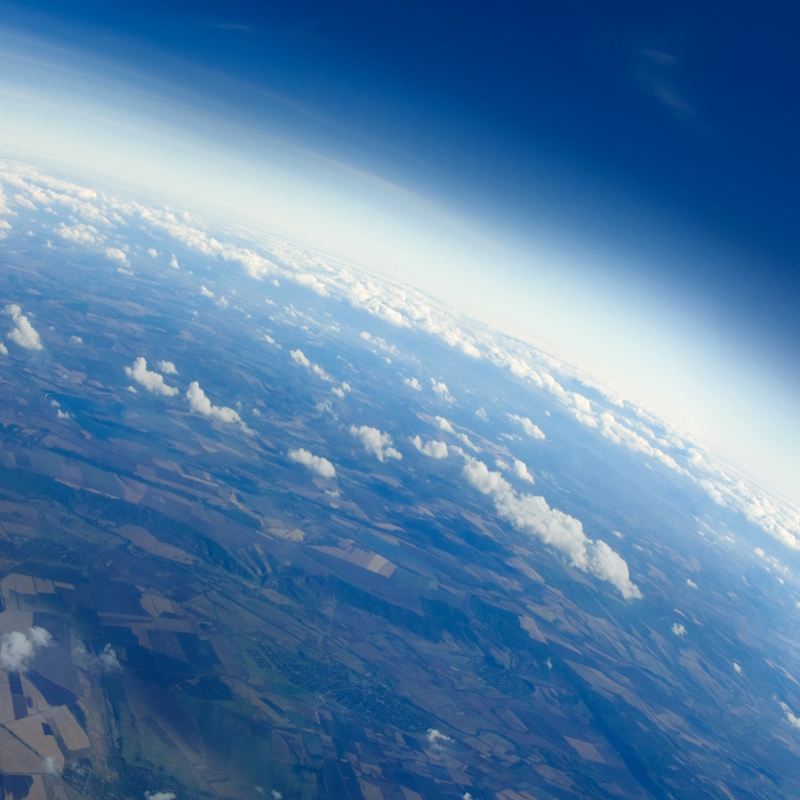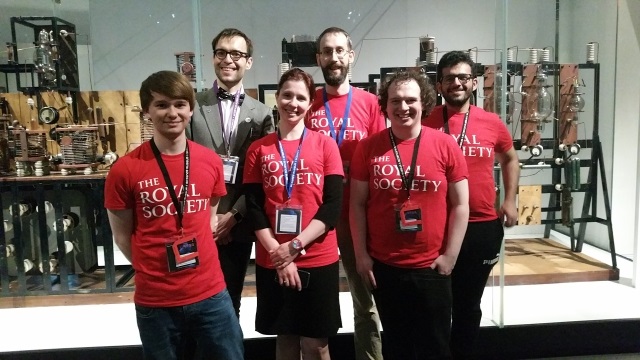Anna Slater, Royal Society-EPSRC Dorothy Hodgkin Research Fellow and Timothy Easun, Royal Society University Research Fellow, tell us about their experience of exhibiting at Science Museum Lates and pass on their advice to others doing the same.

Science Museum Lates are adult-only, after-hours events which aim to show the fun side of science. Anna Slater, Royal Society-EPSRC Dorothy Hodgkin Research Fellow and Timothy Easun, Royal Society University Research Fellow, tell us about their experience of exhibiting at the Lates and pass on their advice to others doing the same.
Why did you get involved?
Anna: Tim and I have experience participating in and leading outreach activities, but had never done anything on the scale of Science Museum Lates. I personally was very excited about the chance to fulfil a childhood dream by working, even temporarily, at the Science Museum!
Tim: It was a great opportunity! I’ve always loved talking about science, and what better place to do that than the Science Museum? It was only a question of whether or not to apply this time, or in the (mythical) future when I’ll be more organised and have more time. Anna and I have known each other for a decade, and she was the obvious person to ask, especially on a short deadline.
How did you get started?
Anna: We put the application in jointly at very short notice, and were delighted to be accepted. Then began a process of streamlining the activities, at which point we were very lucky to be joined by Sam Illingworth – an expert science communicator.
Tim: Bringing Sam in to the project was an inspired move on Anna’s part. He helped us develop our ideas, and added more that turned out really well. Having a ‘science poet’ on the team meant we designed activities beyond our previous experience, and helped us critically think about what we’d originally proposed.
Anna: We all worked very well together; having such a good team was a huge part of why the event was so much fun. We also felt we had been well briefed by the Royal Society and the Science Museum before the event.
Tim: They ran a training day for all the participants, which answered a load of questions about what to expect at the event. We also picked up helpful tips that fed into our planned activities.
What kind of activities did you do?
Anna: We initially planned to include more of our flow chemistry research, a ‘self-assembly ceilidh’, and a stand where Tim and I would discuss our research in more detail, but decided instead to focus on six short activities that worked well together.
These were designed to show how self-assembly of molecules can be used to make useful materials. We started with magnetic words taken from our published research that participants used to assemble poetry about science (the winner can be found on Sam’s blog). Then, participants played a guessing game with 3D printed models of our materials to answer the question: what on earth is this, and what does it do? The next activities gave visitors a chance to do a bit of molecular building themselves, constructing towers of porous organic molecules and making a 3D jigsaw of a porous metal organic framework against the clock. We also brought along some Lego separation boards to demonstrate one of the applications of our materials: separating smaller, non-useful gas molecules from larger, useful ones!
Finally, our community build used museum visitors to assemble a complex porous structure over the course of the night – the time lapse video can be seen here.
What was the experience like?
Anna: People came with some fascinating, insightful questions – I ended up talking about a huge breadth of topics, from molecular packing, to nuclear physics, to CERN (some topics more confidently than others!). The participants were generally really up for trying the activities and it was a delight to be part of the event.
Tim: I agree, it was fantastic to be part of the event and the interest and enthusiasm from the public was really high. I talked with maybe 500 people over the course of the evening, some in groups, some clearly on dates, and even a hen party who were having a great time!
Has anything changed?
Tim: The people we spoke to were incredibly engaged and interested in what we were doing. Maybe I’d grown a bit cynical in my day job, but I was pleasantly surprised at just how many visitors really wanted to know the science behind the activities in more depth than I expected. It was inspiring to experience their enthusiasm and has definitely helped me see my field with fresh, excited eyes.
Anna: This has really showcased what a fantastic opportunity a Royal Society fellowship is, and given me a renewed enthusiasm for public outreach. I’ve also now got quite a collection of hands-on activities that will be recycled for future public engagement events! I’m looking forward to the next activity I’m involved with, which is the Royal Society Summer Exhibition; I’m part of the team running ‘The Hole Story’, an exhibit about molecular cages led by Dr Becky Greenaway (University of Liverpool).
Anna: To assess the impact of our exhibit on participants, we collected email addresses from people who took part in the competitions and who assembled poems. Sam has been in touch to follow up with more information and we’ve asked them to complete a short survey to get feedback. On the night, the hands-on activities got an excellent response and the reaction of the visitors to our exhibit was really positive.

From left to right: Michael Thorne, Sam Illingworth, Anna Slater, Timothy Easun, Adam Nevin, Omar Al Badi
What advice would you give to other research fellows?
Tim: Work with people you like! Having two of us in related fields and Sam, with essentially an external perspective, was a strength and probably helped us choose and pitch what we did at a sensible level. The very late stages of preparation were a little stressful but, on the whole, having this event to organise was useful for keeping perspective on the rest of my work.
Anna: I agree that having a good team is key; having an experienced science communicator on board was really helpful and gave us confidence in what we were planning to do. Relentless enthusiasm helped with the stressful aspects – I worried at earlier stages that all our ideas were still rather ‘theoretical’, but it all came together really well in the end! I also recruited volunteers to help build some of the activities by putting out an advert on the student intranet – lots of people were eager to help in exchange for coffee and biscuits. On the night, I don’t think any of our team ate dinner until midnight – in hindsight I should have gone for a sandwich while we were waiting for participants to filter up to us as I didn’t get a chance later on!
Tim: If anyone ever gives you an opportunity like this, grab hold of it and do it!
